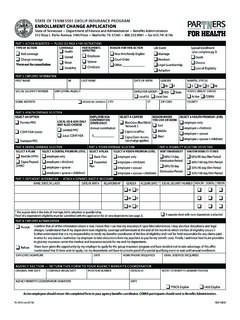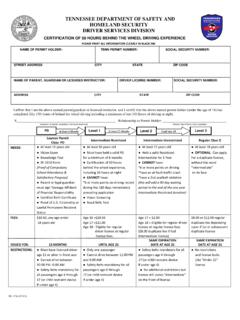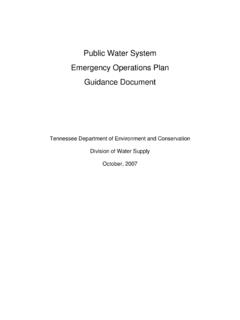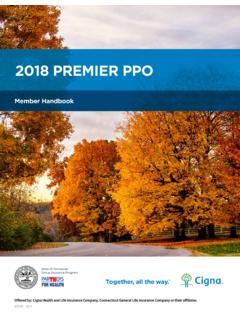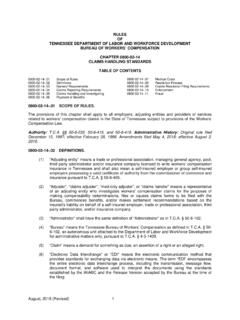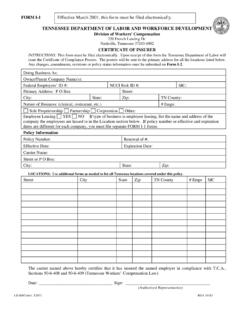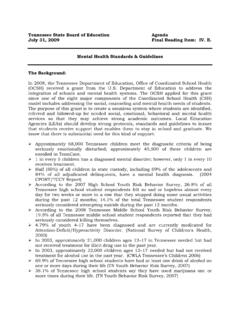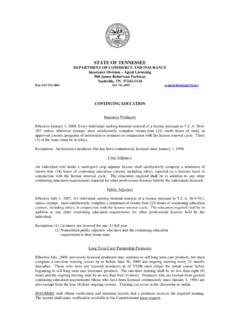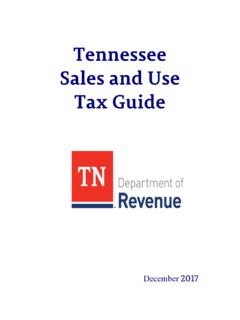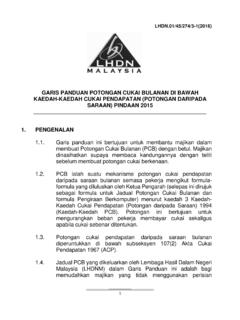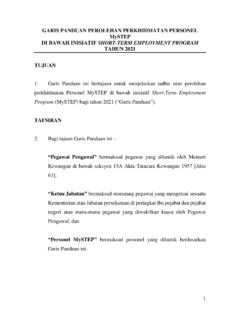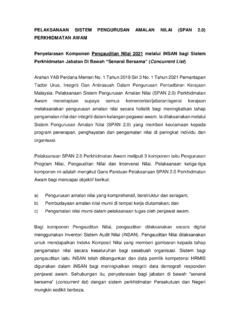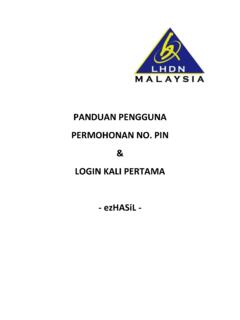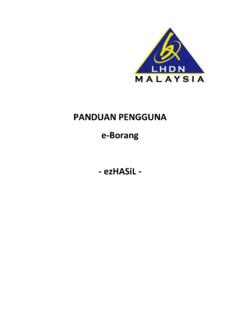Transcription of Tennessee Instructional Leadership Standards and ...
1 TennesseeInstructionalLeadershipStandard sand AdministratorEvaluation2 If you currently hold a PAL, ILL-A, ILL-B, or ILL-P License, you do not need to complete thereview. If you currently hold a BAL, you will need to complete the review and survey, unless you meet the following criteria for advancement to the ILL-P: A DirectorofSchoolsmustcertifythattheappli cantexhibits: a minimumoftwoyearsofsuccessfulexperiencea sa principal,assistantprincipaloraninstruct ionalsupervisorin a TASL-mandatedposition,and performance at the professional level on theTILS. TheTASLD irectormustcertifythattheapplicanthassuc cessfullycompleted: the Beginning Principals Academy or the Beginning Supervisors Academy,or anIndividualProfessionalLearningPlanin cooperationwitha should review this material and complete the corresponding online review to convert to anILL-B?
2 All active Beginning Administrator Licenses (BALs) are set to expire on 08/31/15. All BALs must transition to the Instructional Leader License (ILL) structure. Thosemeetingadvancementcriteriamayadvanc eto ILL-Professional(ILL-P). Thosenotmeetingadvancementcriteriamustco nvertto ILL-Beginning(ILL-B). This presentation and the corresponding online review ensure that all individuals converting a BAL to an ILL-B have basic knowledgeof: therevisedTennesseeInstructionalLeadersh ipStandards(TILS)whichfocus onthecurrentexpectationsforinstructional leaders,and therevisedadministratorevaluationsystem, thatassessescurrentinstructional leaders againstthe to the TILS in 2013 were conducted to ensurethat: Expectations were based on the roles and responsibilitiesof instructionalleaders Specific, measureable, actionable performance behaviorswere identified4 Tennessee Instructional Leadership Standards 2013 RevisionsEffective Instructional leaders ensure that school personnel, programs,procedures, and practices focus on the learning and achievement of all students.
3 Based upon best practice and current research, and sharpened by the wisdom of experienced educators, the TennesseeInstructionalLeadership Standards (TILS) identify core performance indicators of ethical and effective from the belief that ethical behavior permeates the mindset and actions of every effective leader, the revised Tennessee Instructional Leadership Standards (TILS) embed the phrase, ethical and effective Instructional leader, into the opening stem of each Leadership standard. The purposeful placement of this phrase articulates the intrinsic nature of ethical behavior in all facets of such as honesty, respect, sound judgment, commitment, fairness, compassion, work ethic, and a genuine belief that all children can learn and grow, contribute to the foundation of ethical behavior connected to and Effective InstructionalLeaders6 StandardA:InstructionalLeadershipforCont inuousImprovementStandardB:CultureforTea chingandLearningStandardC:ProfessionalLe arningandGrowthStandardD.
4 ResourceManagementTennessee Instructional LeadershipStandards7An ethical and effective Instructional leader facilitates the use of Instructional practices informed by assessment data that continually improve with stakeholders to establish and communicate a clear, compelling vision for capacity of educators to provide all students a rigorous curriculum, aligned with Tennessee -adopted with educators to analyze and use multiple forms of data throughout the year to establish specific goals and strategies targeting student achievement educators to develop and execute interventions to address all students learning needs, grounded in multiple sources of data (academic, social, and/or emotional). monitors and adjusts progress toward established goals and facilitates procedures and practices leading to A.
5 Instructional Leadership for Continuous Improvement8An ethical and effective Instructional leader collaborates with stakeholders to create and sustain an inclusive, respectful and safe environment conducive to learning and growth with stakeholders to establish and communicate a clear, compelling vision for a culture conducive to teaching educator strengths to engage all students in meaningful, relevant a safe, respectful, and orderly environment measures to actively involve families in the education of and communicates expectations for individual and shared ownership of student, educator, and and celebrates improved educator and student performance related to school vision B: Culture for Teaching andLearning9An ethical and effective Instructional leader develops capacity of all educators by designing, facilitating, and participating in collaborative learning informed by multiple sources of with stakeholders to establish and communicate a clear, compelling vision for professional learning and monitors a rigorous evaluation system using an approved educator evaluation data to inform, assess, and adjust professional learning goals faculty and self in data-informed, differentiated professional learning opportunities for educators, aligned with the Tennessee Standards for Professional with others to induct, support.
6 Retain and grow/extend effective educators basedon evidence of student and and supports potential teacher-leaders and provides growth opportunities inalignment with the Tennessee Teacher self-practice based on multiple sources of feedback, including performance evaluation results :ProfessionalLearningandGrowth10An ethical and effective Instructional leader facilitates the development of a highly effective learning community through processes that enlist diverse stakeholders utilizes community resources and partners to support the school smission, vision, a diverse set of educators and stakeholders in school improvement , communicates, and enforces a set of standard operatingproceduresand routines aligned with district, state, and all budgetary responsibilities with accuracy, transparency, and in the best interest of students D: ResourceManagementAdministratorEvaluatio n.
7 Purpose, HistoryandComponentsAccurate evidence collection and scoringHigh quality feedbackImproved leader performanceIncreased student learningThe purpose of evaluating administrators is to provide high quality feedback that deepens skills and improves leader performance, leading to increased shows that the two most important Leadership factors in increasing student achievementare: cultivatingleadershipin others,and First to the Top Act(2010) Included new teacher and principal evaluationsystems implemented statewide in 2011-12 TennesseeInstructionalLeadershipStandard s(TILS) Revised in 2013 to reflect the changing nature and work of principals - from building manager to implementingshared leadershippractices. Principal evaluationrubric Revised to align with revisedTILS Revised rubric piloted in 2013-14 Full implementation of revised rubric in2014-15 History of AdministratorEvaluation14 The rubricincludes An overview that emphasizes the importance of a school svision Research that informeddevelopment 4 TILS Standards (3 Instructional Standards and 1 management) 17 indicators scored across 5 levels Multiple descriptors for eachindicator 2 types of evidence for eachindicator Practices = QuantitativeData Outcomes=ObservableData A brief Glossary ofTe r msComponents of the Administrator EvaluationRubric15 Growth Measure 35%Achievemen t Measure 15%Qualitativeincludes: Evidence collection based on administrator evaluationrubricQuantitativeincludes.
8 Growth measure -School-wide orsystem-wideTVAAS Achievement measure -Goal setby administrator andevaluatorComponents of Administrator Evaluation16 Cycle1 First Evidence Collection Period (August December) First round of evidence collection focused on Standards A, B andC First Semester Feedback Conversation andScoring Scores for Standards A, B and C submitted into CODE following feedbackconversationCycle2 Second Evidence Collection Period(January-May) Second round of evidence collection focused on Standards A, B, C andD Second Semester Feedback Conversation andScoring Scores for Standards A, B, C and D submitted into CODE following second feedbackconversationSummer BridgeConference Evaluators conduct summative bridge conference with administrators to communicate a finalscoreand to discuss reinforcement and refinement areas for the following EvaluationProcess17 Standards A, B and C must be scored foralladministrators.
9 Scoring Standard D is required for allprincipals The Tennessee Administrator Evaluation Rubric emphasizes shared Leadership . As assistant principals participate in responsibilities found in Standard D (such as school and athletic budgeting), it is strongly recommended that they be scored on all indicators from vs. Required Indicators for Administrator Evaluation18 Scoring is designed to allow administrators to showgrowth over the course of a school year. Scoring in the first cycle only considers Standards A, B, and C of the rubric. First cycle scores make up one-third of an administrator s qualitativescore. Scoring in the second cycle considers all four Standards . Second cycle scores make up two-thirds of an administrator s haveyourBALconvertedto anILL-B,pleasecomplete Conversion - OnlineReviewPlease note, you will need your Tennessee Educator License Numberin ucan locate your license number through the Educator Licensure Informationserviceprovidedonourwebsite,l ocatedhere:LicensurePublic questions or clarifications, pleaseemail: Evaluation Evaluation Licensure NIET Best Practices Portal: Videos and professional developmentresources.
10 TEAM : Weekly TEAM Tools andResources
